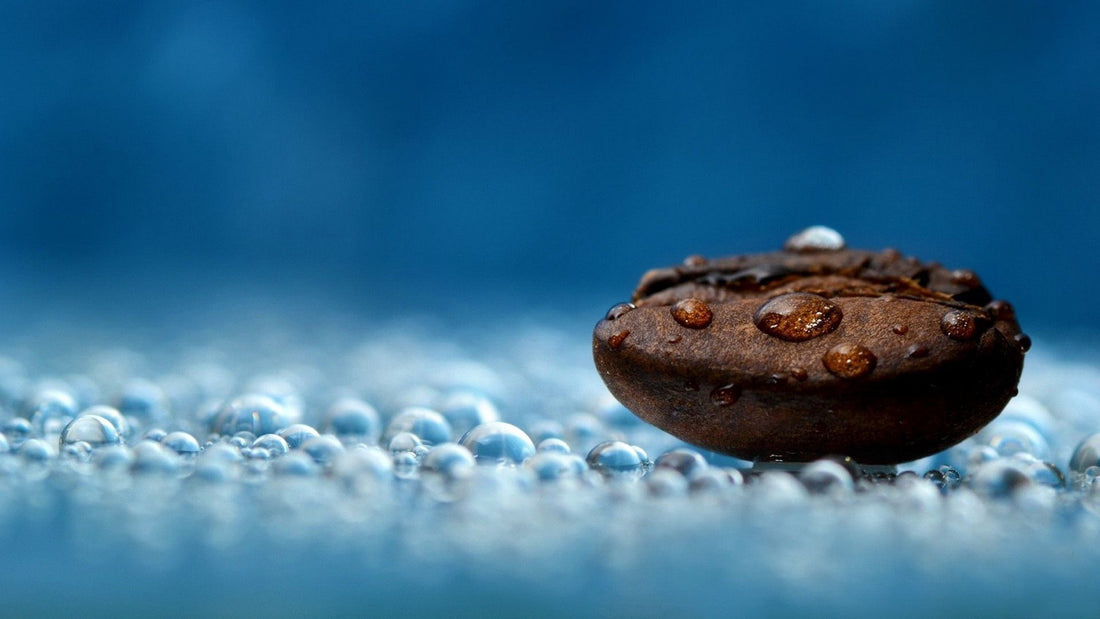
Unlocking the Secret to a Cleaner Grind: The Magic of the Ross Droplet Technique (RDT) in Coffee Grinding
Rhys EvansShare
In the nuanced world of coffee brewing, every detail, from bean origin to grinding technique, can significantly impact your final cup. One particular challenge that coffee enthusiasts often encounter is static electricity during the grinding process. It's a small detail with frustrating consequences, often leading to a mess and inconsistency in the grind. However, a revolutionary yet straightforward method known as the Ross Droplet Technique (RDT) promises to change this aspect of your coffee routine for the better.
Understanding the need for RDT begins with recognizing the problem it solves. Static electricity occurs from the friction of beans rubbing against each other and the grinder parts. This static causes coffee particles to stick to the grinder, cling to each other, and, in some cases, practically levitate, creating a disorderly coffee-making space and an irregular grind. This is where RDT comes in, a technique introduced by David Ross, which involves adding a tiny amount of moisture to coffee beans before grinding to mitigate static.
So, how does such a simple trick become a game-changer in your coffee brewing ritual?
The Science Behind RDT
When you introduce a couple of droplets of water into a batch of coffee beans, you're doing more than dampening the surface. You're creating a pathway for static charges to neutralize. Water conducts electricity, including static electricity, allowing the charges that build up during grinding to dissipate quickly. Instead of the coffee grounds repelling each other and sticking to the grinder's parts, they lose their charge and behave, well, like normal coffee grounds should.
Implementing RDT in Your Routine
Incorporating RDT into your coffee grinding routine is a piece of cake. All you need is a fine-mist spray bottle. Before grinding, simply spritz your measured coffee beans lightly with water. You don’t need much; the goal is a light coat. Stir the beans to ensure the moisture spreads evenly, then proceed to grind as usual. The difference becomes clear almost immediately, with less mess during the transfer of grounds from the grinder to your coffee maker or espresso machine.
The Advantages of RDT
-
Cleanliness: Nobody enjoys cleaning up the mess that scattered coffee grounds make. RDT significantly reduces the mess caused by static, meaning less time cleaning up and more time enjoying your brew.
-
Consistency in Grinding: Static can cause grounds to bunch up, creating an uneven grind. This inconsistency can affect the extraction and, ultimately, the flavor of your coffee. By reducing static, RDT helps create a more uniform grind, contributing to a more consistent extraction and better-tasting coffee.
-
Enhanced Flavor: By achieving a more consistent grind without the interference of static cling, you are more likely to extract your coffee evenly, avoiding over or under-extraction and reaching the flavor profile you are aiming for.
-
Moisture Control: Particularly in dry climates or seasons, the air can sap moisture from your coffee beans, affecting their quality and how they grind. The introduction of moisture through RDT can help mitigate the effects of a dry environment.
Perfecting Your RDT Technique
Achieving the optimal results with RDT is both an art and a science. It involves understanding the balance of just enough water to eliminate static but not so much that you're introducing a new variable into your coffee. The goal is a misting that barely changes the tactile quality of the beans.
-
Choosing the Right Spray Bottle: Not all misters are created equal. You need a bottle that can deliver a very fine mist, as you want to moisten the beans, not drench them. A quality spray bottle can be the difference between the success and failure of applying RDT.
-
Knowing How Much to Spritz: This part of the process might require a bit of trial and error. The optimal amount of water is going to depend on your environment (humidity and temperature), the type of coffee beans, and their freshness. Start with a couple of spritzes and adjust as needed in subsequent brews.
-
Timing: RDT is best done just before you grind the beans. You don't want to let dampened beans sit, as this can affect the freshness and flavor profile of the coffee.
RDT: A Staple in the Coffee Community
From casual coffee drinkers to professional baristas, RDT has been widely adopted within the coffee community. It's recommended not just for the practical benefits it offers in terms of cleanliness, but for the enhancement it provides to the coffee's taste by promoting a more consistent grind and extraction.
In online forums, social media, and coffee shops, you might hear success stories about RDT or receive a tip from a fellow coffee aficionado about their specific RDT method. The beauty of the coffee community lies in this shared knowledge, contributing to everyone's mutual goal: the perfect cup of coffee.
